#yarsha
Text

yarsha
13 notes
·
View notes
Text
islami zil sesleri indir 2023-2024 – En iyi Arapça Zil Sesleri indir
islami zil sesleri indir 2023-2024 – En iyi Arapça Zil Sesleri indir. İslami zil sesleri, İslam dinine ait olan ve dualar, ezanlar veya İslami müzik parçalarından oluşan zil sesleridir. Bu zil sesleri, inançlarına bağlı olan insanlar için telefonlarında kullanmak isteyebilecekleri seçenekler sunabilir.
2023-2024 yıllarında da İslami zil sesleri internet üzerinden indirilebilir. Arapça zil sesleri de bu kategori içinde yer alabilir ve telefonlarına indirip kullanabilirler.
Kullanıcılar, İslami zil sesleri indirmek için online müzik marketleri, müzik indirme uygulamaları veya diğer kaynakları kullanabilirler. Ayrıca, kullanıcılar kendi yapılmış veya indirilmiş MP3 dosyalarını da telefonlarına zil sesi olarak atayabilirler.
İslami zil sesleri, insanların telefonlarında inançlarına uygun bir şekilde yansımasını sağlamak için kullanabilecekleri seçenekler sunar. Bu sayede, insanlar inançlarına bağlı bir şekilde telefonlarını kullanabilirler.
islami zil sesleri indir 2023-2024 – En iyi Arapça Zil Sesleri indir
allah-akbar-alafasy-Telefon-Zil-Sesi-Indir
allah-u-akbar-Telefon-Zil-Sesi-Indir
allahu-allahu-ringtone-Telefon-Zil-Sesi-Indir
Arabian-Classic-Music-Rringtone-Telefon-Zil-Sesi-Indir
Ertugrul-Ringtone-Telefon-Zil-Sesi-Indir
Fajar-Alarm-Telefon-Zil-Sesi-Indir
Hasbi-Rabi-New-Telefon-Zil-Sesi-Indir
Ishq-E-Mamu-Violin-Ringtone-Telefon-Zil-Sesi-Indir
Islami-Ton-Telefon-Zil-Sesi-Indir
meryem-movie-music-Telefon-Zil-Sesi-Indir
Muslim-Hammal-Telefon-Zil-Sesi-Indir
Muslim-Ringtone-2021-Telefon-Zil-Sesi-Indir
names-of-allah-2021-Telefon-Zil-Sesi-Indi
qaseeda-burdah-Telefon-Zil-Sesi-Indir
ramadan-sms-ringtone-Telefon-Zil-Sesi-Indir
Turkish-Style-Xylophone-Ringtone-2021-Telefon-Zil-Sesi-Indir.mp3
Waghari-Bo-Ghana-Ringtone-Telefon-Zil-Sesi-Indir.mp3
Yal-Islama-Arabian-Ringtone-Telefon-Zil-Sesi-Indir
Yarsha-Arabic-Song-Ringtone-Telefon-Zil-Sesi-Indir
Read the full article
0 notes
Text
डोल्पामा जेठ ११ गतेदेखि यार्सा सङ्कलन खुला गरिने
डोल्पा जिल्लामा यार्सागुम्बा सङ्कलनका लागि यही जेठ ११ गतेदेखि खुला गरिने भएको छ । शनिबार सदरमुकाम दुनैमा जिल्ला समन्वय समिति डोल्पाका प्रमुख शेरबहादुर बुढाको
डोल्पा जिल्लामा यार्सागुम्बा सङ्कलनका लागि यही जेठ ११ गतेदेखि खुला गरिने भएको छ । शनिबार सदरमुकाम दुनैमा जिल्ला समन्वय समिति डोल्पाका प्रमुख शेरबहादुर बुढाको अध्यक्षतामा जिल्लाका विभिन्न निकायका प्रमुख प्रतिनिधिको सहभागितामा बसेको बैठकले शे–फोक्सुण्डो राष्ट्रिय निकुञ्जभित्र र विभिन्न सामुदायिक वनमा रहेका यार्सा पाटन आगामी असार १० गतेसम्म सङ्कलन गर्न पाउने निर्णय गरेको हो । स्थानीयवासी…

View On WordPress
0 notes
Photo
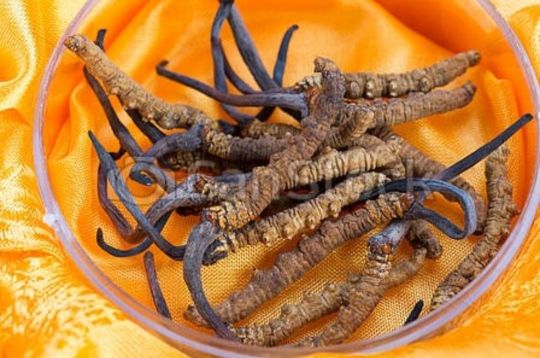
Yarsagumba: Found in Himalaya region of Nepal known variously as yarsagumba, yarchagumba, yartsa gunba, yatsa gunbu and, more colloquially, "Himalayan Viagra," the parasitic caterpillar fungus Cordyceps (Ophiocordyceps sinensis) grows on and kills Tibetan ghost moths during their larval phase underground. A tiny mushroom sprouts from the head of the dead larva, poking a few millimeters out of the ground. Traditional Chinese medicine (TCM) claims the fungus—which is boiled and added to tea or soup—can act as an aphrodisiac, cure cancer and fight fatigue. These medical claims have not been borne out scientifically. Although the fungus has been used in TCM for centuries, demand took off after 1993 when three female Chinese runners broke world records and their coach told the media he had fed the athletes yarsagumba in a soup of turtle blood. #yarsagumba #yarsha https://www.instagram.com/p/B3zT6-Sg3Fc/?igshid=1bi1oehjbj270
0 notes
Text
i forgot i finished a whole playlist for yarsha cr*tr*le which s very impressive considering i was not into it for very long and also i decided to go with a very folk kind of tone for her which is just not what i listen to at all
4 notes
·
View notes
Photo

I'm only 2 days into playing World of Warcraft and I already managed to 1: rage over the limited (M) Night Elf appearance options and 2. Fall in love with my own 🙃 His name is Yarsha and I'm already too attatched
7 notes
·
View notes
Text
worldbuilding june, day 7: how does the economy work in your world?
We’re going to look at this from the standpoint of a few different regions rather than have me attempt to give an overview of roughly 500000000000000 regional and local economies. There are a couple generalities that work: on the mainlands, most sedentary people’s economic spheres extend for maybe 50 miles around their hometown; it is only in politically well-connected areas like parts of Nueh ar-Mai, Dol Garreda, Tahhanri, and Lanfisen that goods made in far-away places are widespread.
Vro-Gwalnaruz forms a regional economy with Tinrevalut and the subarctic tundra, as well as the southern tip of Vro-Droùmaez. The Valtulu export some timber, although getting it across the turbulent straits and inlets is a challenge, as well as amber and furs and occasionally metal goods. The Qulvuk and Qulevak confederations mainly trade in furs and various ivories for finished metal goods; marine ivories, for whatever reason, are extremely effective as substances through which to channel magic. The Gwalnazhek trade in wool and fish for fur and timber and also engage in some harvesting of ivories. Relations with the selchies and seafolk are vital for all of these cultures, and I’ll get to the economies of seafolk and of selchie pods in a bit. The Gwalnazhek, Valtulu, and Quktil run on barter economies amongst themselves; coin (usually from Arreshathra or the old Silver Henshauth [which I should really come up with its own demonym one of these days]) is not unknown but, so far from the places that back it up, it is largely useless and often ends up incorporated into clothing or charms.
Coastal Tahhanri, especially in the south along the Yarsha Straits, is a hotbed of economic action, as a natural stopping point for ocean-going traders and as a place with considerable inland forests. Several Tahhanriki cities are centers of boatbuilding and of trade, and Tahhanri along with the main channels of Nueh ar-Mai is home to a fledgling banking industry. Much of Lanfisei, Garredi, Arreshathran, and even Nuhev trade is conducted with Tahhanri-made ships and Tahhanri-backed coin.
The Ku-Jemhar are instrumental in overland trade between Vro-Droùmaez, Arreshathra, and parts further west with Nueh ar-Mai, and powerful Ku-Jemhar tribes will often use promises of safe passage for caravans through the Jemui steppe to gain outside backing and recognition.
Nueh ar-Mai is probably the most economically active region in terms of production and manufacture; it operates under a system similar to manorialism (briefly: land is controlled by a lady, who in theory ultimately receives it from the queen, and inhabited by peasantry who pay rent through direct labor or rendering of goods), although on a local level these arrangements can be a good deal more unstable. The Nuhev countryside is quite fertile and exports of various oils and grains and animal products are common. Nuhev cities are also home to powerful manufacturing concerns which produce everything from simple pottery for regional distribution to luxury wares such as complex brocades and manuscripts that make their way far afield.
Now to the seafolk [who, along with the selchies, bisklavredenn, etc., I realize I’ve really unfairly neglected in these posts!], who, although there are some amphibious ones and even ones who are more comfortable on land, generally do not have much use for dry-land products. Although they involve themselves in certain minor luxury trades such as pearl-harvesting and are adjacent to much ocean trade (seafolk, as well as selchies and swan maidens have been invaluable in the field of cartography), the main link between marine seafolk societies and humans is through magic. Magical deposits are much more common on the seafloor and especially around hydrothermal vents, and considering the efficacy of marine ivories in channeling magic the seafolk have an easier time of containing it within artifacts than most land-based societies. Seafolk magical items are therefore quite common in settings of magical study; usually they trade them for ceramic wares which are put to a variety of creative uses, especially in aquaculture.
1 note
·
View note
Photo

CORDYCEPS SINENSIS Cordyceps Sinensis se ha utilizado durante al menos 1500 años en la medicina tradicional china y se encuentra entre los hongos medicinales más utilizados en el mundo hoy en día! Cordyceps Sinensis es una especie de hongos que es parasitaria por naturaleza, tomando como huésped varias variedades diferentes de polillas fantasma. Solo crece en elevaciones superiores a 3500 metros y se encuentra en la meseta tibetana. Cordyceps es conocido por varios nombres como Yarsha Gumba en Nepal y dong chong xia cao, que significa "gusano de invierno, hierba de verano" en China. En inglés, se conoce como hongo Caterpillar. El nombre latino cordyceps literalmente significa "cabeza de club". , que sin duda es una referencia a su forma de bastón y sinensis significa "de China". Se ha descubierto que Cordyceps es bastante efectivo en ........ Leer más https://dxnalimentacionorganica.blogspot.com/2015/07/que-es-cordyceps-el-viagra-del-himalaya.html?m=1 Adquiera su producto con u. Descuento del 50% clic aquí
0 notes
Text
Juniper Publishers-Open Access Journal of Environmental Sciences & Natural Resources

Water poverty Analysis using Water Poverty Index (WPI) -A critical Review
Authored by PJ Sajil Kumar
Abstract
Water poverty is a condition in which people does not have access to safe, clean and enough quantity of water to satisfy their needs. This brief review gives a glimpse to the water poverty analysis using a holistic water management tool called Water Poverty Index (WPI), which is developed by Sullivan et al. to consider all the aspects involved with water management.). Water poverty index (WIP) encapsulates data on water resources, access, use, socio-economic capacity and the environmental water quality, which aids water monitoring agencies to analyze water situation in the giver region. The major advantages and the challenges in the implementation of this method is critically evaluating in this mini review.
Keywords: Water Stress; Water poverty index (WPI); Water Poverty; Water Management; Water Analysis; WPI Components
Introduction
Water as essential life giving compound, which is vital in keeping all the live alive life on the earth. In the recent decades, anthropogenic activities and many other reasons have created so much difficulties even in providing basic water supply for inhabitants from both surface and groundwater resources. This poverty for water or richness of water within the area, has to be calculated not only based on available water resources, but also by considering the factors such as accessibility, capacity, use and environmental factors Sullivan CA [1]. Water stress is an emerging issue in many of the developing countries since the rapid urbanization led to increase in population rate, economic growth which forced in increase in the solid waste generation and thereby decreasing the quality of water due to the pollution, deforestation and other anthropogenic activities and the water became inaccessible for human use. Water stress can effectively be evaluated using several methods among which Water Poverty Index (WPI) is the most widely used method. In this short review, we will be critically discussing about the same Sullivan CA [1].
Water Poverty Index (WPI)
Water Poverty Index (WPI) is a simple, open and transparent tool, one that will appeal the politicians and decision makers, and at the same time empower poor people to better participate in water sector interventions and budgets development in general Sullivan CA [1]. The elementary advantage of the index is that it encapsulates more than one measure of influencing factors in a single number, and one line representation of the whole picture.
In its first iteration, Sullivan et al. [2] developed the WPI to consider all the aspects involved with water management. Consequently, the WPI explains water poverty according to five components - Resource(R), Access (A), Capacity(C), Use (U) and Environment (E). The calculation process for the WPI is simple, cost effective and easy to understand even though it requires large micro data sets. Today, the WPI method is extensively used to study water poverty. To calculate the values for the above-mentioned five components of WPI, Cook et al. [3] used Bayesian Networks connecting water and poverty in the Volta Basin of Ghana. Lawrence et al. [4] published a comparative study, showing the WPI of different countries across the world. Castelazo et al. [5] incorporated the concept of flood risk vulnerability as a variable into the WPI for Juarez Municipality in Mexico. In addition, Vyver [6] calculated WPI and established Water Poverty Maps for some regions in South Africa. Within no time the research of WPI ranged from small scale community to country level. Identifiable work has also been carried out in Nepal where Merz [7], used Sullivan et al method, quantifies the components of WPI for the Jhiku and Yarsha catchments, both bordering the Indrawati Basin. Moreover, the WPI is one of the best tools to study climate vulnerability. In fact, with the addition of just a few components, the WPI can be used to calculate the Climate Vulnerable Index (CVI) Sullivan CA [8].
WPI Structure
The five components explained above are combined to calculate the WPI. The final value of WPI for a particular location can be calculated as described by Sullivan et al. [1] is presented below.
Where, Wi is the Weight applied to each of five components
R - Resource
A - Access
U - Use
C - Capacity
E - Environment
These weights (WI) are constrained to be non-negative and sum to unity. Each of the components is standardized so that the value of WPI falls between 0 and 100.The highest value 100 is taken to describe the best situation whilst the worst is 0.
The various sub components which help to calculate the five components of WPI are listed in below (Table 1).
Critical evaluation
If the In case WPI is updated at reasonable intervals, it can be used to monitor the progress. . Even though WPI had found a great relevance in the sustainable water management sector in policy making, there are few defects in the current index. In particular, two major weaknesses of WPI index have been identified by Gine Garriga [9]. Rather than using the available data for the calculation of WPI, the writer's developers of the index have used the data needed to construct WPI. Another major drawback of the current WPI is the equal weight age given to the components is not justifiable. Moreover, a single number alone cannot reveal anything about the complexity of water issues. So alternatives to tackle these issues are very important. Further studies have proved that multivariate techniques can be used to give the weight age. In this technique, weight age is given based on the variations in the original variables Gine Garriga [10,11]. Furthermore, detailed studies are required to criticize the existing WPI and to suggest a new improved WPI calculation method for the sustainable future.
Conclusion
This brief review tries to portray overall picture of water poverty index as a tool to evaluate water situation of the particular region, which helps policy planners to evaluate the threats and to take immediate action. Similarly, decision makers, after estimating all the five components, will be able to realize and identify the sectors which need significant attention in regards to the water needs. In a nutshell, the WPI makes us understand the difficulties of water issues by integrating the physical, social, economic and environmental aspects by linking water issues to poverty. Most importantly it is suggested to make further detailed research to overcome the critics to have a holistic tool which yields precise results. Use of multivariate techniques to the weight assessment is suggested to get better results.
For more Open Access Journals in Juniper Publishers please click on: https://juniperpublishers.business.site/
For more articles in Open Access Journal of Environmental Sciences & Natural Resources please click on: https://juniperpublishers.com/ijesnr/
To know more about Open Access Journals Publishers
To read more…Fulltext please click on: https://juniperpublishers.com/ijesnr/IJESNR.MS.ID.555569.php
#Juniper Publishers#Juniper Publishers Address#Juniper Publishers Group#Environmental Chemistry#Meteorology#Microbial Ecology#Oceanology Oceanography#Hydrology
0 notes
Text
यार्सा सङ्कलन गर्न भीड
Crowds to collect yarsa
यार्सा सङ्कलनका लागि जुम्लाको पाटन क्षेत्रमा भीडभाड हुन थालेको छ । जिल्लामा आर्थिक स्रोतको रुपमा यार्सागुम्बा सङ्कलनलाई लिइने गरिन्छ । यार्सा सङ्कलनका लागि पाटनतिर लागेका कारण जिल्लाका अधिकांश ग्रामीण बस्ती सुनसान बनेको जनाइएको छ ।
गाउँघरबाट पाटन जानेको लर्को लागेको गुठीचौर गाउँपालिकाका स्थानीय व्यापारी दीपक बोहोराले जानकारी दिनुभयो । यार्सागुम्बा सङ्लनको लागि तातोपानी, गुठीचौर, तिला, पातारासी,…
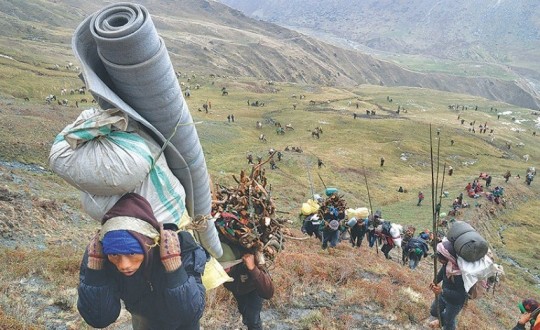
View On WordPress
0 notes
Text
यार्सा सङ्कलन गर्न भीड
Crowds to collect yarsa
यार्सा सङ्कलनका लागि जुम्लाको पाटन क्षेत्रमा भीडभाड हुन थालेको छ । जिल्लामा आर्थिक स्रोतको रुपमा यार्सागुम्बा सङ्कलनलाई लिइने गरिन्छ । यार्सा सङ्कलनका लागि पाटनतिर लागेका कारण जिल्लाका अधिकांश ग्रामीण बस्ती सुनसान बनेको जनाइएको छ ।
गाउँघरबाट पाटन जानेको लर्को लागेको गुठीचौर गाउँपालिकाका स्थानीय व्यापारी दीपक बोहोराले जानकारी दिनुभयो । यार्सागुम्बा सङ्लनको लागि तातोपानी, गुठीचौर, तिला, पातारासी,…
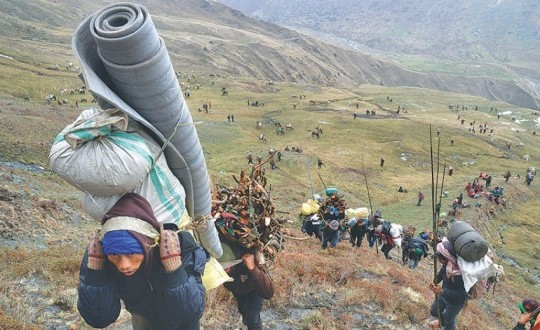
View On WordPress
0 notes
Photo
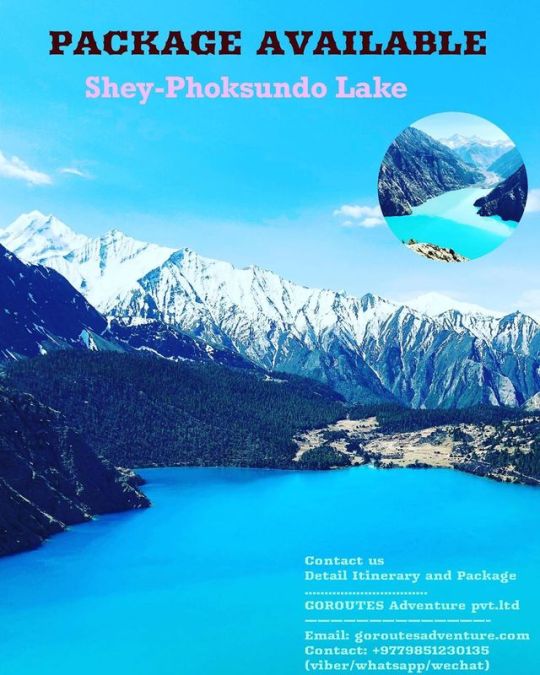
#visitnepal2020 Lets promote virgin destination of Nepal. “Phoksundo lake located at an altitude of 3660m is in dolpa district and the highest elevation to view full lake is in 4150m. Strong pulling key point of this lake is to be blue in color throughout the year and the sources of water are from Himalayas as well as natural springs. The key attractions to any visitors while exploring around the dolpa region can be experienced of these : High Himalayas , Lake,Tibetan Local Cultures, Trekking Routes, Waterfalls, White water River (bheri), open barren Mountains, Blue sheep, Yaks-Donkey-Horses Caravan, Local Language, Yarsha Gumba, Monasteries, suspensions Bridge, Off-Road Drive, Herbs plants, tea-houses, and Big Pine Trees. It is also a National Park of Nepal so poaching and deforestation is strictly prohibited. #saveearth #stopglobalwarming Visit phoksundo lake Shey-Phoksundo Lake Packages Available. #phoksundolaketrekking #phoksundolaketrekkingpackages Contact us for Detail Itinerary and Package. ............................... GOROUTES Adventure pvt.ltd ——————————————- Email: goroutesadventure.com Contact: +9779851230135 (viber/whatsapp/wechat) Headoffice: Thamel,Kathmandu, Nepal (at Nepal) https://www.instagram.com/p/BxU5ZskHFqR/?utm_source=ig_tumblr_share&igshid=1rp2r5b3gk6ts
0 notes
Photo

ooh this was gonna be a Yarsha.......dont think she will ever be done but i got the important parts blocked out so
#cape. big sword. Done Basically#i think my interest has Waned too much and also i tend to just leave wips for dead if i dont finish them the first time#but. idk! i love a big cape and also sword#cr tag#my arte#i like this one. i will count it
4 notes
·
View notes
Text
worldbuilding june 2018 day 2: what’s the geography of your world?
Most of the Vaugwèrr stories take place on the landmasses bordering the Green and Southern Seas.
[I tried to draw a map, but trying to elaborate on biomes in it got confusing and I don’t like online mapmakers. This is going to be long enough to warrant a read-more.]
Moving in a clockwise circle from the southern ice cap:
Subarctic, coastal lowlands emerge from the edge of the ice cap in the Southern Sea. To the northeast is the large island of Tinrevalut; extending in a long archipelago to the northwest are the many islands of Vro-Gwalnaruz. The lowlands are mainly tundra, while Tinrevalut contains both tundra and taiga, as well as some arctic wetlands. Vro-Gwalnaruz is a mix of rugged interior and dune grassland*.
On the mainland, Vro-Droùmaez is somewhat similar to Vro-Gwalnaruz: fertile, low-lying plain, turning into a mixture of coniferous and temperate broadleaf forest as the land climbs westward into the [Great Mountains]**.
Moving up the coast from Vro-Droùmaez, the climate becomes more temperate; the lands of Arreshathra were once forested but have been extensively cultivated over many millenia. Again, as the land ascends north and west into the continual mountain chain, montane forests take hold.
On the other side of the [Great Mountains] are the high shrub-steppes of Jemui. Moving northwards and down into the watershed of several great rivers, the land becomes more fertile, a temperate steppe.
The watershed of these rivers marks the gradual transition into Nueh ar-Mai, populous, fertile, and in its north subtropical. The large delta formed by its greatest river emptying into the Nuhev Gulf of the Green Sea extends into a massive wetland.
An arm of the [Great Mountains] separates the Nueh ar-Mai watershed from the temperate grassland and forest surrounding the mountain kingdom of Fenash. However, this grassland has the highest known concentration of magical deposits in the world.
Another arm of the [Great Mountains] extends down between that grassland and the lands of Arreshathra to the Yarsha Straits, separating the eastern and western mainlands and connecting the Green and Southern Seas.
Along the northwestern coast of the eastern mainland extend the lowlands and wetlands of Tahhanri.
To the south of Tahhanri, along the western and southern coasts and into the interior, are the lands formerly possessed by Silver Henshauth (an empire centered in Arreshathra, long fallen). They are hilly and temperate.
On the north of the eastern mainland, between the Green Sea coast and the massive inland Sweetwater Sea, are the lands of Lanfisen, which are temperate shading to subtropical in the north.
In the Green Sea is the large island of Dol Garreda, which is mainly (for lack of a better word) Mediterranean and in parts semi-arid, with a somewhat mountainous interior.
These lands are all generally well-populated, although Vro-Gwalnaruz, Tinrevalut, and especially the tundra cannot sustain large populations, and areas with significant magical presence are often the foci of conflict between local warlords or larger polities and as such are often depopulated. Though most people do not move very far from their places of birth (except those in nomadic societies), travel between the lands is nevertheless common and there are several competing trade languages.
*Also known as machair.
**I’ll come up with a better name at some point.
1 note
·
View note
Text
Rs 7.5 million tax collected from Yarsha collectors
Rs 7.5 million tax collected from Yarsha collectors
The local administration, Mugu collected Rs 7.5 million in revenue from Yarshagumba pickers (the precious wild herbs available in highlands) in Mugu this season.
This amount was collected as entry fee to the herbs collection sites from the pickers. The Mugu local administration allowed the people to pick the precious medicinal herbs from May 23 to 31.
The entry fee for each picker from 23…
View On WordPress
0 notes
Text
हिमपातले यार्सागुम्बा सङ्कलन रोकियो
Snow stopped Yarsagumba collection
औषधिजन्य जडीबुटी यार्सागुम्बा सङ्कलन रोकिएको छ । हिमाली जिल्ला मनाङमा हिमपात भएपछि यार्सागुम्बा सङ्कलनका लागि खर्कमा पुगेका सङ्कलक फर्किएका हुन् ।
हिमपातले गर्दा यार्सागुम्बा सङ्कलन गर्न सक्ने अवस्था नभएपछि बेँसी फर्किएको धादिङका मिलन तामाङले बताउनुभयो । “मनाङमा पानी परेपछि भ्राताङ लेकमा हिउँ पर्दा यार्सागुम्बा सङ्कलन गर्न नसकेर बेँसीतर्फ फर्र्किएका हौँ, ठेक्कामा काम गर्न यहाँ आएका हौँ”, उहाँले…
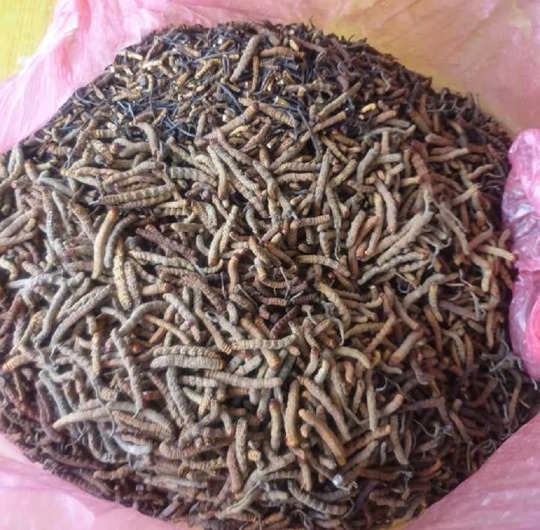
View On WordPress
0 notes